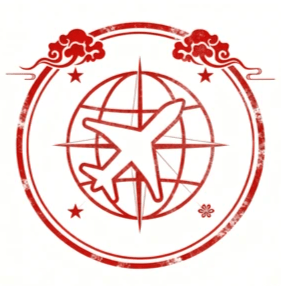Wing Chun in Foshan is both a living piece of local culture and a martial-art symbol amplified worldwide by film and cross-cultural exchange. To fully understand Wing Chun you should look at its family-line transmissions, the “centerline” philosophy that underpins its techniques, how Bruce Lee and modern media spread its appeal, and what visitors to Foshan can actually see and do.
Origins and Local Context
Wing Chun is traditionally traced to the Qing era and named after the female martial artist Yim Wing Chun. Over generations the art propagated through multiple teacher-student lineages across Lingnan; Foshan is one of the important local hubs. Ip Man (Ye Wen), as the most widely known modern master associated with Wing Chun, trained and taught in this region; his presence helped establish local memorials and training centers (e.g., Ip Man halls and exhibits). In recent decades Foshan’s efforts to preserve, exhibit, and promote Wing Chun have helped transform it from private lineage practice into a public cultural asset.
The Martial Philosophy of Wing Chun — “Shortest Path, Sensitivity, Structure”
On the surface Wing Chun looks like continuous hand patterns and rapid short-range strikes, but its core is a coherent philosophy of structure, sensitivity, economy of motion, and adaptability:
- Centerline Principle: The body’s centerline is treated as the main axis for attack and defense. Controlling the centerline increases both accuracy and defensive control.
- Shortest Path & Economic Motion: Techniques favor the most direct, efficient trajectories—no wasted movement. This economy is a major source of Wing Chun’s speed and effectiveness.
- Simultaneous Attack & Defense: Defense and counterattack occur in the same motion; Wing Chun blurs the sequence “defend-then-attack,” denying the opponent a comfortable rhythm.
- Chi Sao (Sticky Hands): Sensory training that develops tactile sensitivity—practitioners learn to read tiny pressure changes through contact and respond instantly.
- Structure over Strength: Proper body alignment and angles trump brute force, which allows smaller practitioners to defeat stronger opponents.
- Relaxation & Continuity: Relaxed muscles preserve speed and responsiveness; power is concentrated into short, explosive bursts. Continuous motion ensures energy transfers through the opponent’s guard.
These principles guide training (standing exercises, chi sao, wooden-dummy work, short-bridge punching chains) and make Wing Chun a compact, principle-driven fighting system that scales from self-defense to conditioning.
Bruce Lee: Student, Innovator, and Global Catalyst
Bruce Lee studied Wing Chun as a youth under Ip Man. His early training absorbed Wing Chun’s close-range concepts—centerline control, short explosions of power, and rapid chaining of strikes. But Bruce Lee was not only a student: he reinterpreted and popularized those principles through film and writing, becoming a global bridge for Southern Chinese martial practice.
- Cinematic Amplification: Film editing and framing magnified Wing Chun-like attributes—explosive speed, near-contact exchanges—giving Western audiences a visually striking impression and generating curiosity about the art.
- Methodological Resonance: Lee’s training philosophy—“absorb what is useful, discard what is useless, add what is your own”—echoes Wing Chun’s pragmatic, principle-based approach, encouraging practice that emphasizes efficiency and effectiveness.
- Practical Consequence: Interest sparked by Lee’s films encouraged many Western students to seek authentic instruction, helping Wing Chun spread internationally in diversified forms (traditional lineages, abbreviated courses, technique-driven camps).
For visitors to Foshan, reconciling the on-screen Bruce Lee image with the traditional practice of Ip Man and local lineages is valuable: come see the historical sources in memorials and then watch or join a local class to experience the difference between cinematic spectacle and lineage practice.
Contemporary Foshan: Schools, Memorials, and Living Transmission
Foshan actively supports Wing Chun’s preservation: Ip Man halls, small museums, and municipal training bases coexist with private schools. The result is a practical ecosystem where visitors can “see it, learn it, and practice it.” Many local organizations run public programs that combine historical exhibitions with practical classes.
What Foreign Visitors Can Do — Experience Guide
Short Introductory Experience (half-day → 2 days): Look for schools advertising English instruction or international student classes. Typical intro sessions include centerline concepts, basic stance and footwork, simple chi sao drills, and chained palm/straight-punch practice to feel the mechanics.
Intensive Camp (3 → 7 days): Join a themed training camp that includes wooden-dummy (Muk Yan Jong) work, chi sao progression, basic forms, and controlled partner drills—plus classroom lectures on lineage and history. These camps pair technical practice with cultural context.
Cultural Visit + Practice: Combine a visit to an Ip Man memorial or local ancestral temple with a class in a nearby school. Seeing historical materials and then training helps place the techniques in their local and historical context.
Travel Tips:
- Ask whether the class has English instruction or a translator; if not, choose an instructor known for clear demonstrations—movement often communicates more effectively than words.
- Wear comfortable exercise clothes and indoor training shoes (or follow the school’s barefoot policy).
- Follow dojo etiquette: bow or salute the instructor, listen to safety instructions, and avoid full-force sparring as a beginner.
Why Learn Wing Chun in Foshan?
Learning Wing Chun in Foshan lets you access the art’s historic roots and living lineages while also experiencing how its principles operate in practice. The recommended pathway: visit the Ip Man displays and local ancestral sites first, then take practical lessons in a reputable school—“read the history, then learn by doing.”

